For a while, rumors have been circulating about the demise of the traditional cafe racer. With scramblers and flat trackers dominating the scene, the low-and-sleek genre has been taking a back seat.
But like a venerable art rock band, the cafe racer is hanging in there. Interest is still high—so high that manufacturers are entering the fray.
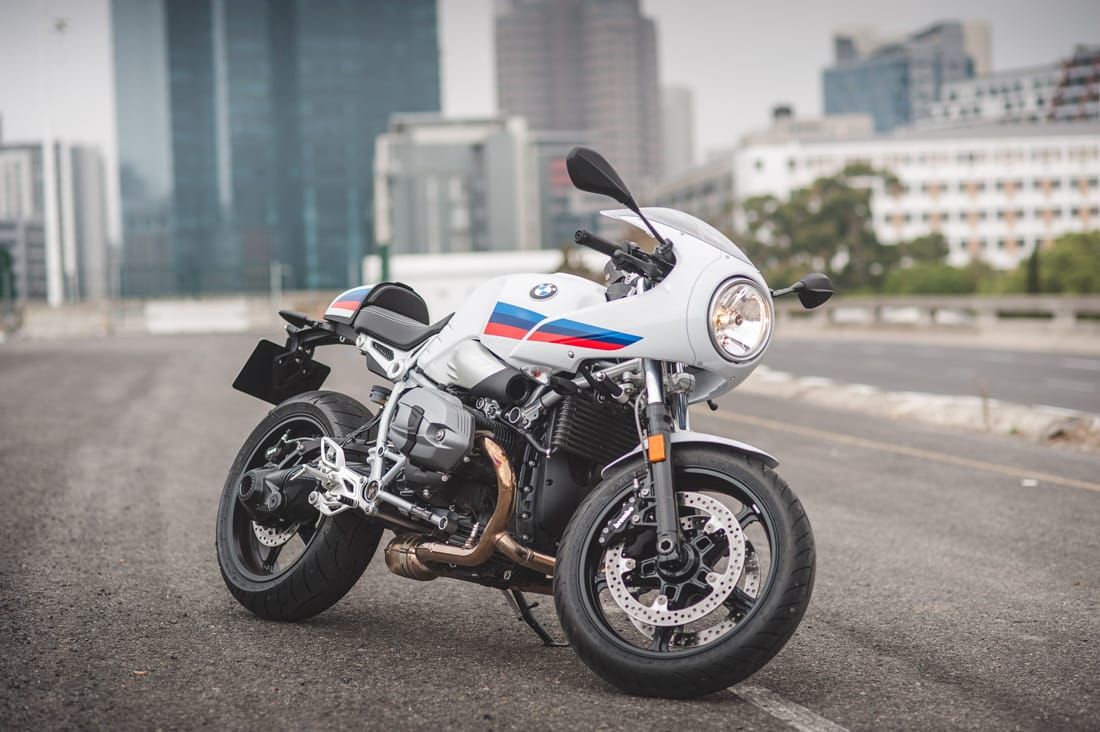
So let’s take a very close look at the R nineT Racer—BMW’s factory cafe, and one of three new models based on the R nineT platform. The other two—the Pure and the yet-to-be-released Urban G/S—are styled as a bare-bones roadster and a retro adventure bike, respectively. The Racer is a vintage speed machine through and through.
All three share the same platform as the R nineT Scrambler—a Euro4 compliant, 1,170 cc / 110 hp air- and oil-cooled boxer packed into a tubular steel frame. They also share the same steel fuel tank, the same suspension (fettled according to model), and the same alloy, five-spoke wheels.
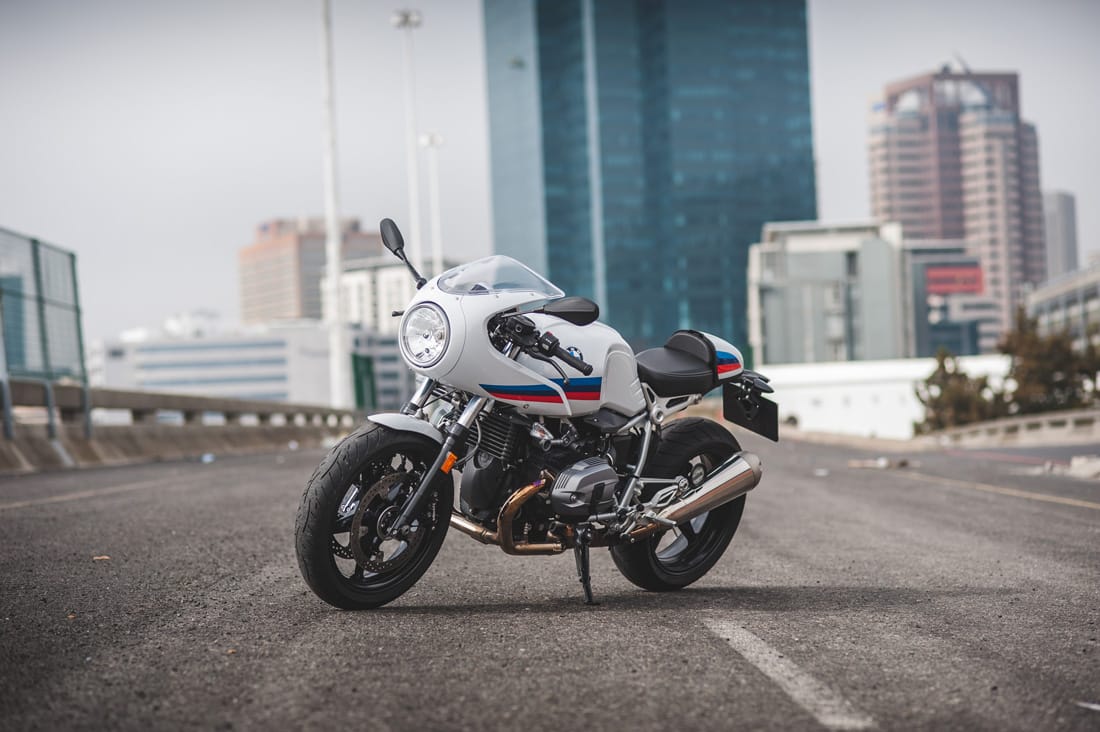
On the R nineT Racer, those wheels are a 3.5 x 17” up front, and a 5.5 x 17” out back. Plus it gets a host of café racer-focused mods: clip-ons, rear sets, a sleek nose fairing and a neat little tail hump. With a silhouette that screams 70s steeze, it’s pure two-wheeled nostalgia; the throwback to end all throwbacks.
Think of it as a production version of the Roland Sands-built Concept 90, for those of us who can’t afford a completely bespoke machine. Or, if you prefer, a homage to the legendary R90S, as piloted by Reg Pridmore and Steve MacLaughlin (which the Concept 90 was inspired by).
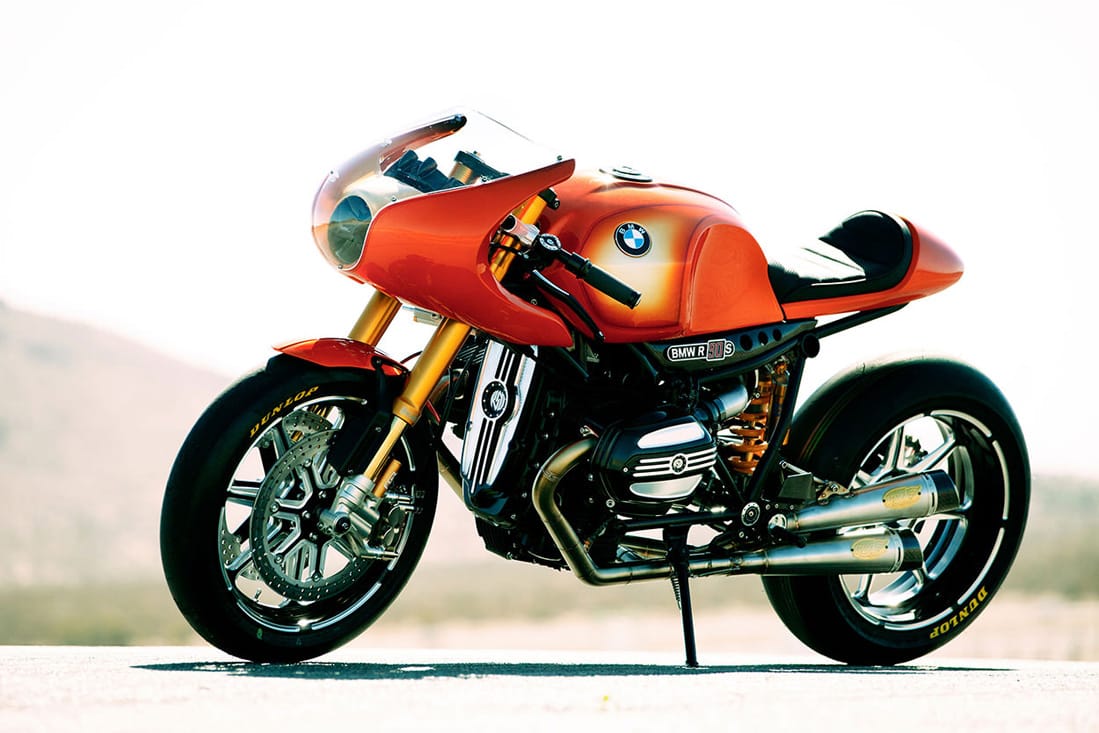
To nail the look, BMW used a mix of existing R nineT parts and new bits. “The Racer was totally inspired by the Concept 90, for sure,” says BMW Motorrad’s Creative Director of Heritage, Ola Stenegärd. “But we didn’t want to invent a lot of new parts, unless absolutely necessary.”
The tailpiece and headlight are borrowed from the R nineT Roadster, but the plastic nose fairing is a completely new piece. “We tried to work as close to the Concept 90 as production would allow,” says Ola.
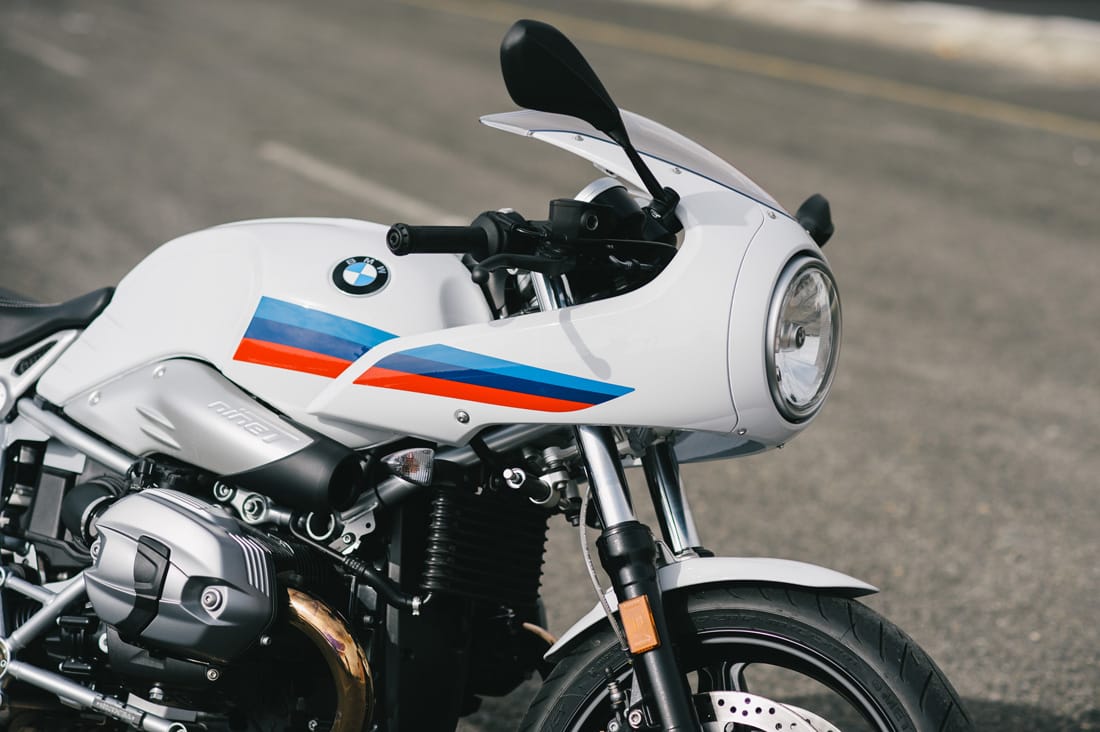
Then there’s that livery—a coat of glossy white accented with BMW’s classic motorsport colors. It works so well, that the fact that BMW never actually raced these colors in the 70s (they only introduced them later on) is irrelevant.
“We wanted the bike to clearly carry a flavor of our racing genes in the company—and these colors really do exactly that,” explains Ola. “A Daytona Orange or Smoke Grey would also look super… so I think we have to look closely at this option for the future!”
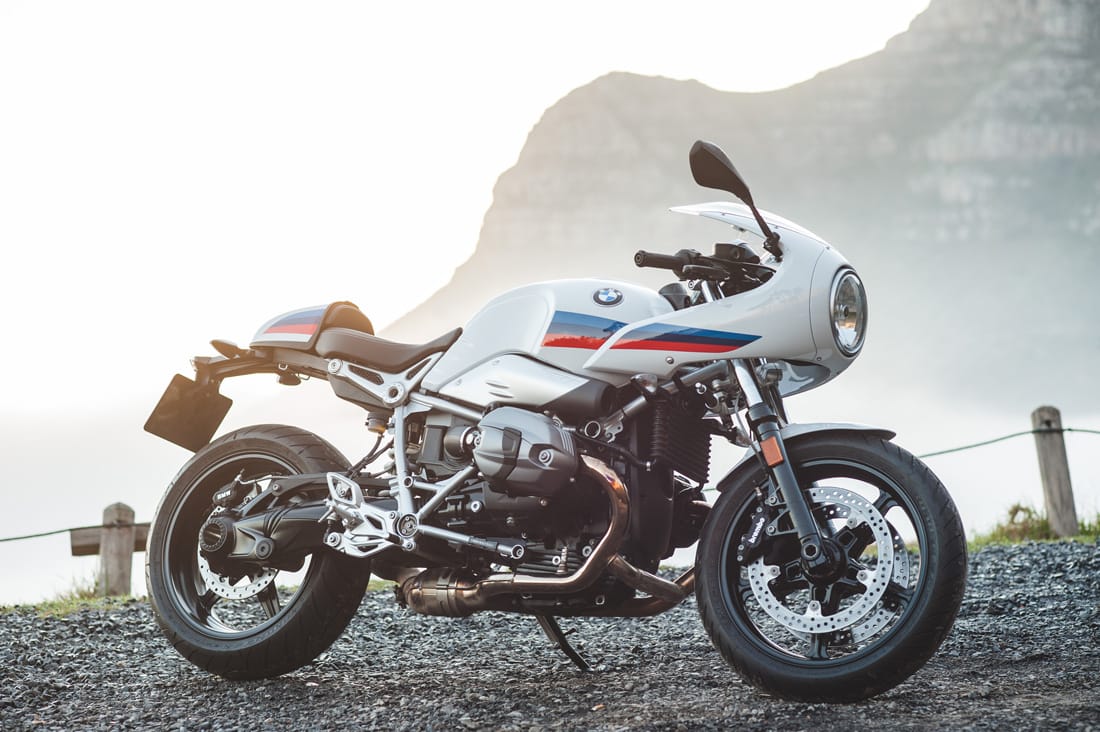
So as a styling exercise, it scores a perfect ten. But is it any good on the road?
To find out, I reached out to BMW the second the R nineT Racer hit showrooms. A few days later, I picked up a barely ridden-in unit from BMW Donford Motorrad Cape Town, with two days to put it through its paces.
If you think this Beemer’s pretty in photos, wait until you lay your naked eyes on it. It is, in a word, exquisite. (I know, I’ve already waffled on about the looks, but just indulge me for a few more lines.)
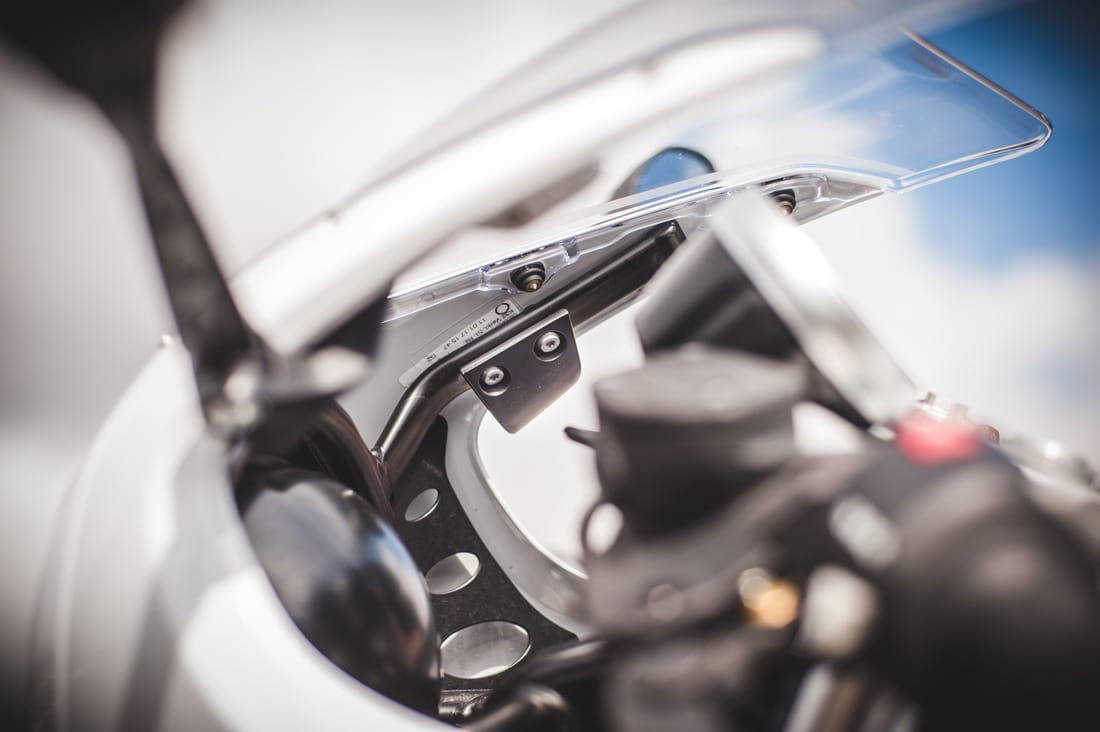
It’s really down to the quality of finishes. BMW have covered all their bases, right down to finishing the frame in silver (rather than the traditional black). And though the fairing is plastic, it doesn’t feel dinky at all, and the frame-mounted bracket is very well thought-out. You’ll also notice the mirror stems mount to the frame, not the fairing itself—so they can be removed with no visible scarring.
Tucked in behind the fairing is a set of dual dials—the same analogue/digital combo speedo as the Scrambler on the left, with a tacho on the right that has its own digital readout. Between the two you get the usual odo features, a gear position indicator, and things like voltage and engine temperature. Oddly, there’s no fuel gauge.
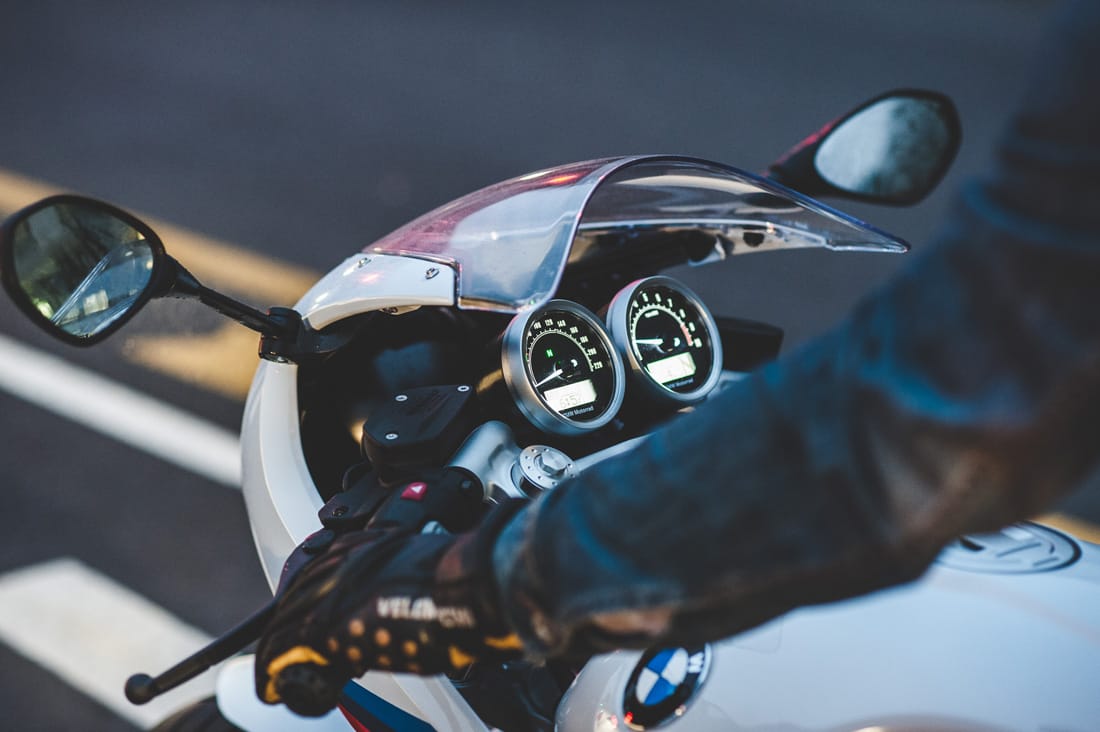
The fender brace and top triple clamp are forged aluminum items, and the rear-sets were designed specifically for the Racer. “We decided to go with a unique handlebar setup and foot peg position,” says Ola, “to really get a solid ergonomic, that would reflect the low slung café racer look we were striving for.”
In keeping with that vibe, BMW have made the R nineT Racer a solo affair. There’s no passenger accommodation out the box, but if you’re willing to spring for the parts you can replace the hump with a seat, and fit the subframe braces that hold the passenger pegs.
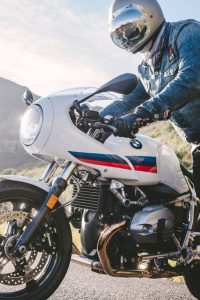
When I was finally done admiring the Racer, it was time to fire it up and hit the streets of Cape Town. Swinging a leg over it immediately brought my back down to earth—literally. As intended, the Racer is low, and the riding position extreme; my six-foot frame was stretched out over the tank, with my feet kicked back into unfamiliar territory.
This is the both the Racer’s biggest strength and weakness. On the up side, the feeling you get from riding it is damn near perfect. You want to hunch down, you want to lean out of the saddle as you carve through corners…and yes, you will find yourself looking for your reflection in shop windows. (And the constant thumbs ups and stares from passers-by don’t hurt either.)
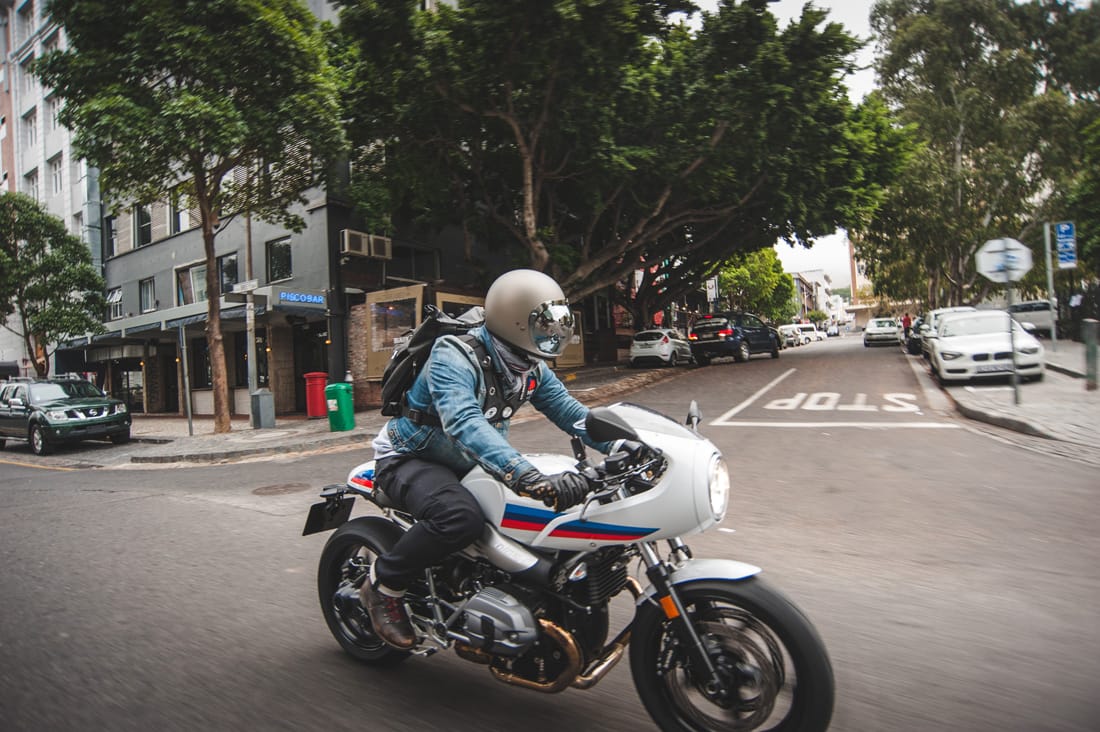
But take the R nineT Racer into slow town riding—or on a tour—and your wrists, back, shoulders and legs will hate you. A lot. This bike has a one-track mind: get to the café, fuel up, find the nearest curvy road and get loose.
Or, as Ola put it when we quizzed him about the comfort: “It’s a Racer! What did you expect?”
“Seriously, there is always a great danger when you try to compromise too many wills and functions into one bike, the main message easily gets washed away. This bike is not about bags or long distance comfort—we have other bikes that cover this ground much better. This bike is about the looks and spirit of an old-school race bike. And I think that’ll take you a long way, wouldn’t you agree?”
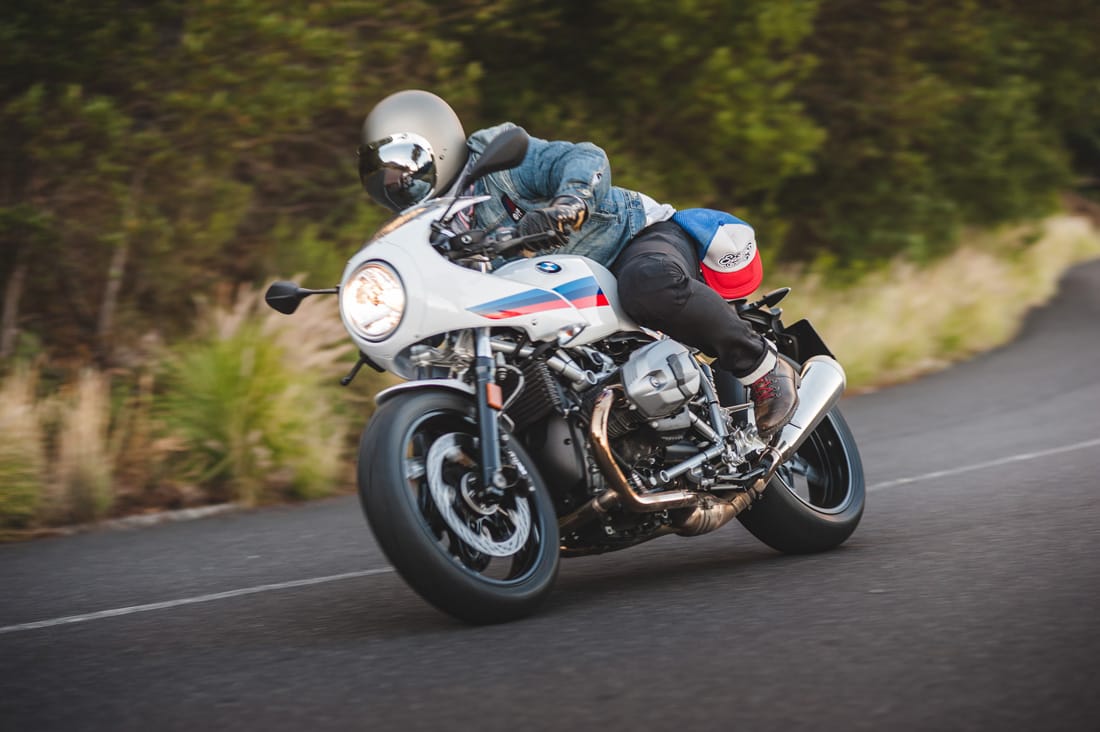
I’m inclined to drink the Kool Aid. Because when you let the Racer loose on the right road, it’s pure bliss. And Cape Town has all the right roads: Victoria Road, Chapman’s Peak Drive, Clarens Drive, Red Hill, Franschhoek Pass—I managed to cram all that (and change) into my time on the Racer.
And I found myself doing something I almost never do—going back and forth through the same sequence of turns to nail them better, faster and tighter. Because this nineT genuinely is a whole bag of fun to ride.
Those extreme ergonomics start to make sense when you’re throwing a 220kg (wet) boxer from turn to turn. With the rider triangle putting the bike’s central mass right under your body, the Racer encourages, and responds to, physical riding.
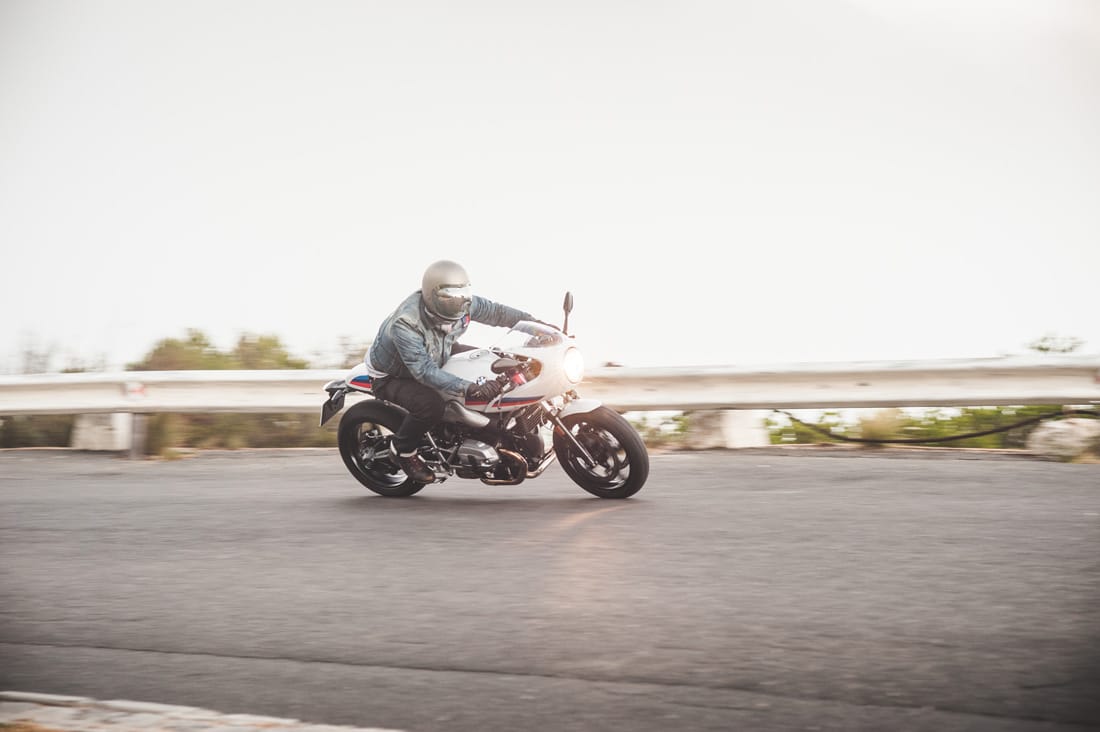
I could insert something here about man and machine becoming one, but I’ll just sum it up by saying that the more involved I got, the more fun I had. I’d lean into turns more than I needed too; crouching low, hanging off the bars, and picturing myself in a 70s road race.
The Racer’s no slouch off the mark, thanks to that tried, tested and torquey boxer and shaft drive combo. And as I found with the Scrambler, the clutch and gearbox are as slick as you’d expect from Bavaria’s finest.
Then there’s the sound. The Racer might not be sporting an Akrapovič silencer like its big bro, the Scrambler, but the BMW muffler sounds just about perfect—if a touch quieter. It burbles at standstill, rumbles on deceleration, and barks when you blip it. And when you combine the exhaust tone and engine note at full tilt, with your butt smushed right into the tail and your chest flat on the tank, it’s intoxicating and highly addictive.
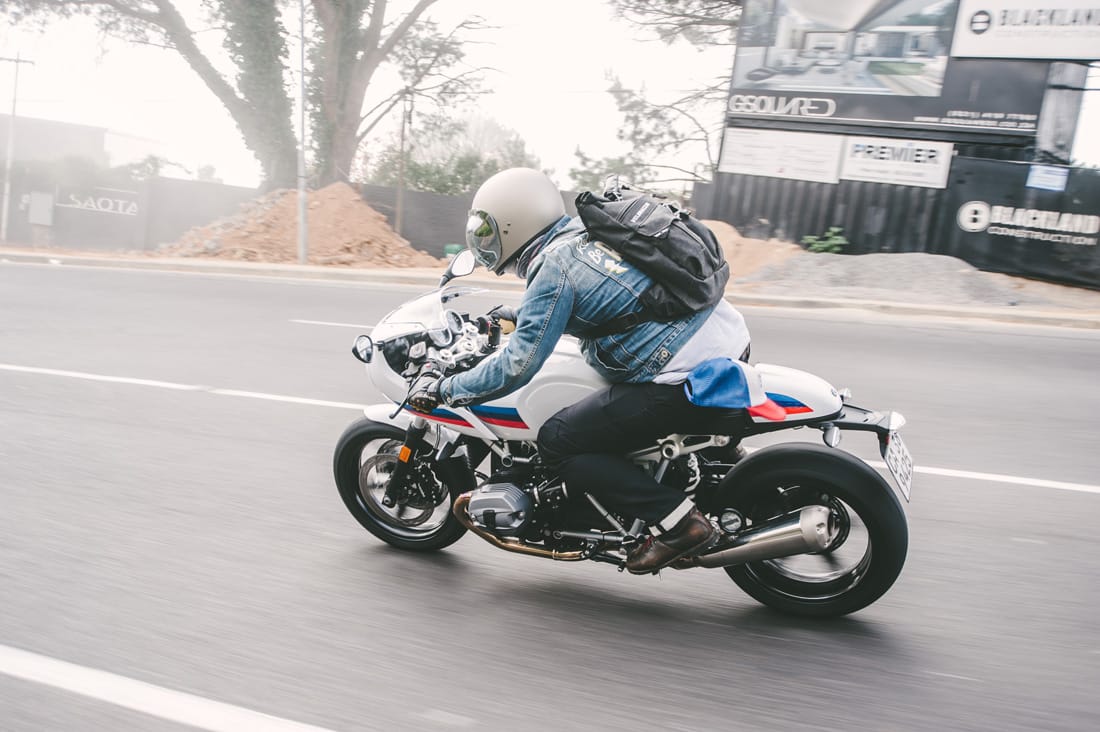
As for braking, there are four-piston calipers up front with 320mm floating discs—and ABS, naturally. They are more than ample for anything you can throw at the Racer, but if you’re after more peace of mind, there’s the US$400 optional traction control, or ASC (Automatic Stability Control). My test unit didn’t have it, and I didn’t miss it.
I know many of you are disgruntled at the fact that BMW didn’t fit the R nineT Roadster’s upside down forks to the Racer, but it’s really no big deal. The right-side-ups do the job on anything but the bumpiest of roads; and if things do get choppy, the low handlebars become an issue just as much as the suspension. The stock setup is surprisingly stiff, so there’s little dive under braking, and a predictable, planted feel through corners.
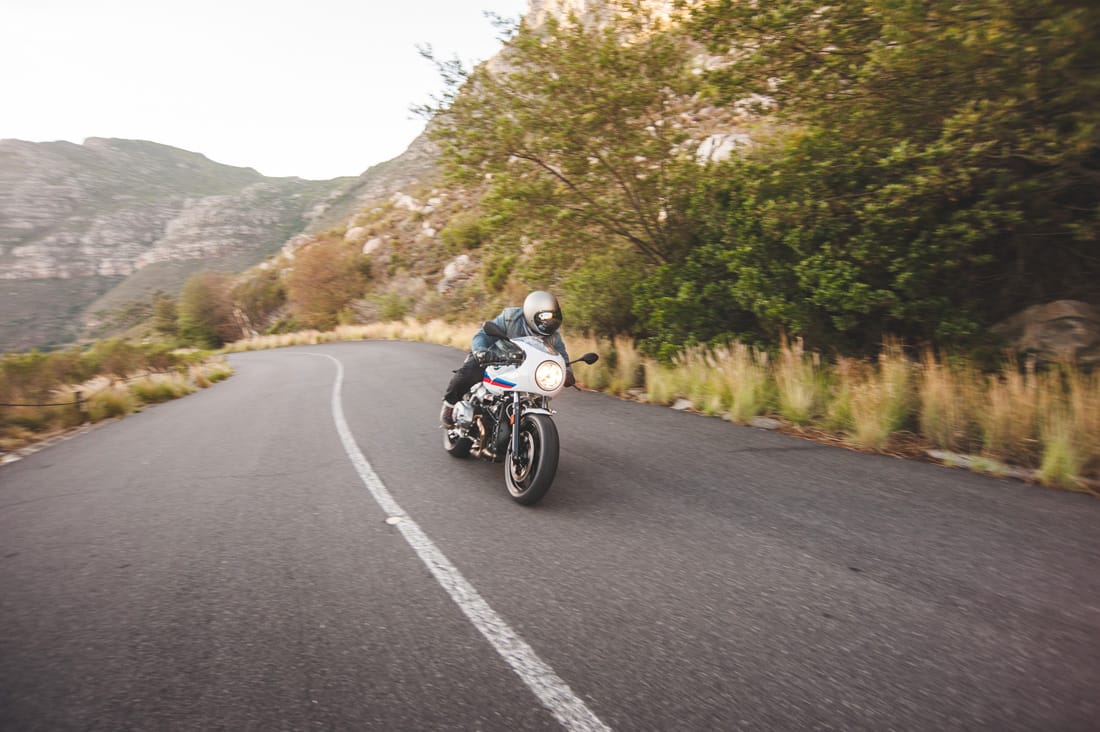
So would I ride the Racer all day, every day? Probably not. But am I going to pine for it the next time I’m linking together my favorite corners? Most definitely.
This is usually the part where purists point out that there’s no such thing as a ‘factory cafe racer,’ but I say bah! The Racer has all the right junk in all the right places, and if you want to fettle it further, it shares many bolt-on and swap-out bits with the rest of the range—like the gorgeous aluminum nineT tank with its seam weld (yours for US$850 extra).
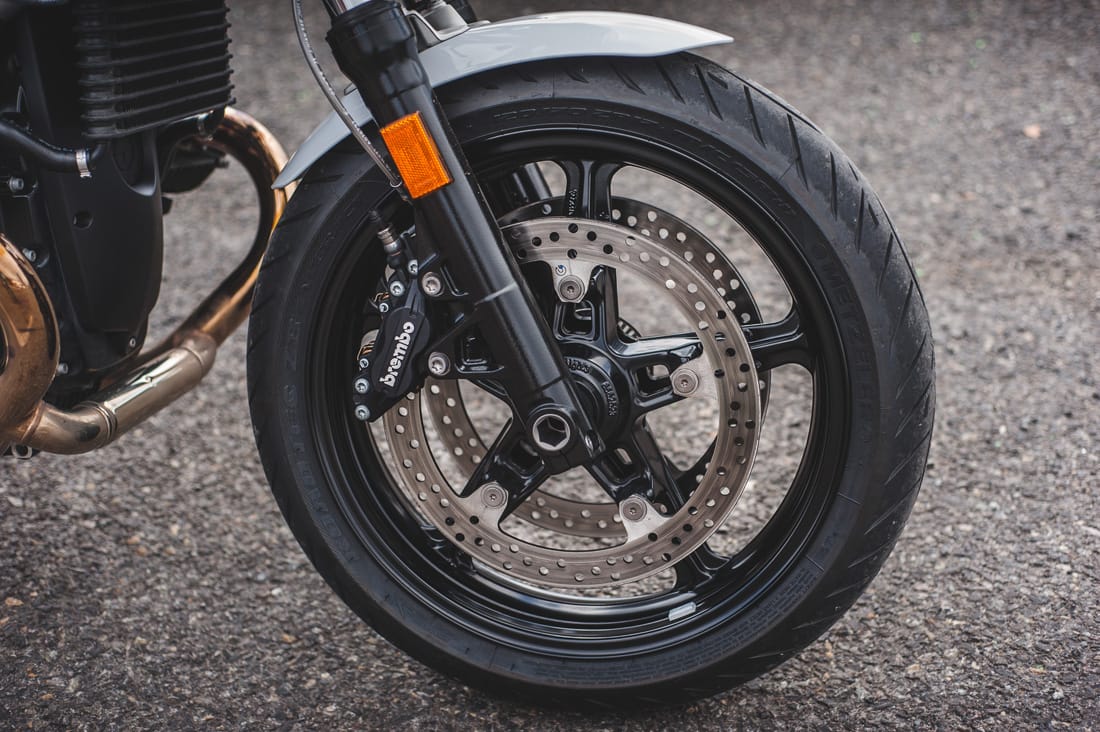
Spoked wheels are a US$500 factory option, but I’m a sucker for the old school track vibe of the factory alloy items. And you can kit your Racer with upgrades like heated grips, LED turn signals and even an alarm.
As for me, I’d just ditch the mirrors and turn signals for a bar-end setup, and tidy up the tail. Do that, and it’d be a dead ringer for many of the pukka custom jobs we see.
Coming in at $13,295 in standard form, the Racer is the second cheapest nineT in the range—next to the Pure. That also puts it squarely between Triumph’s Thruxton and Thruxton R, which are probably its stiffest competition.
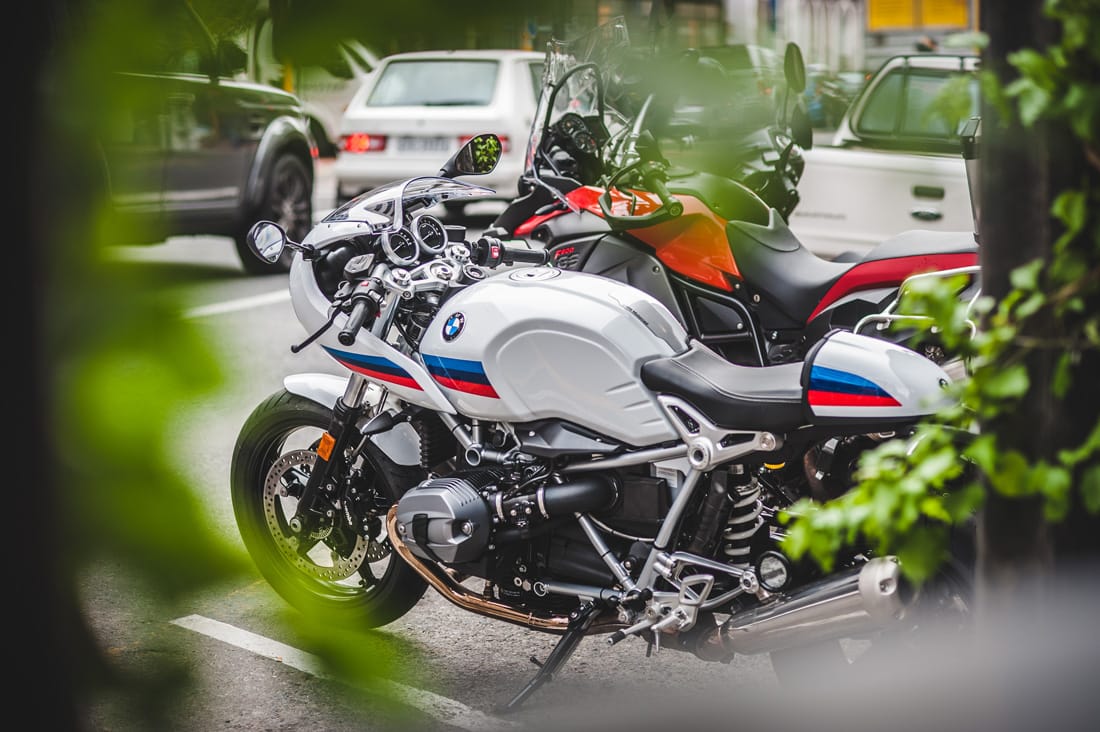
But if you buy into the R nineT Racer’s purist approach—and the sacrifices that come with it—you’re left with one of the best-looking, grin-inducing bikes out there. Long live the cafe racer!
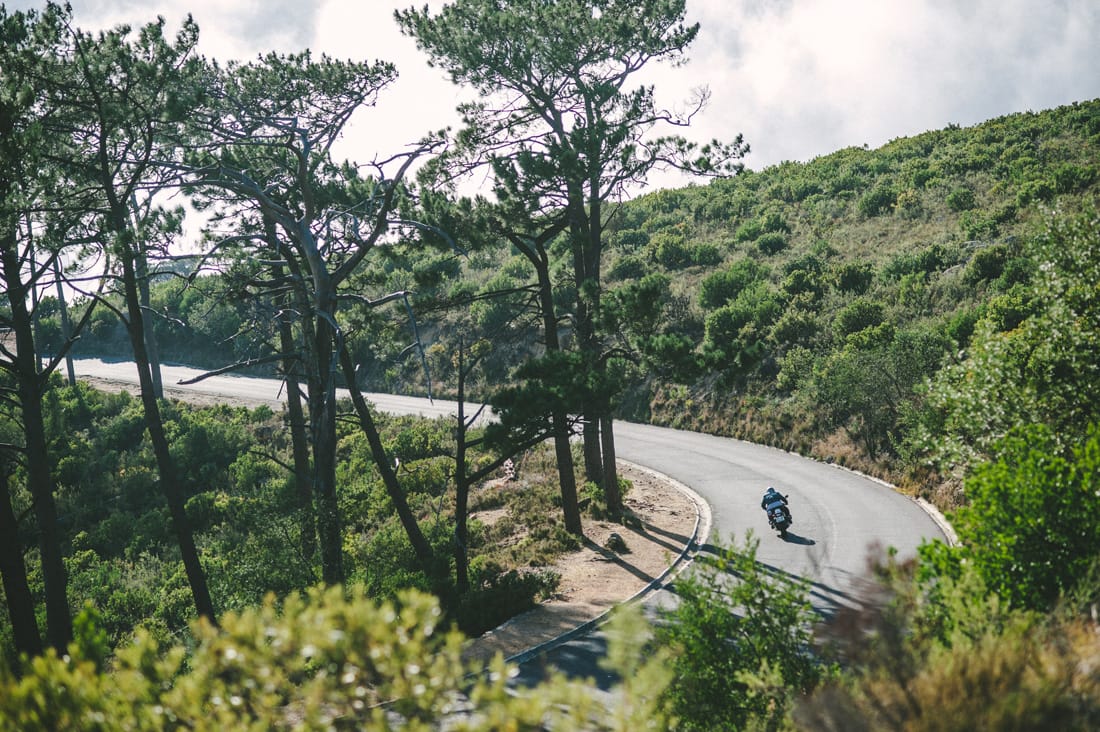
(This article first appeared on Bike EXIF. Reproduced with permission.)
For more information visit: www.bmw-motorrad.co.za




